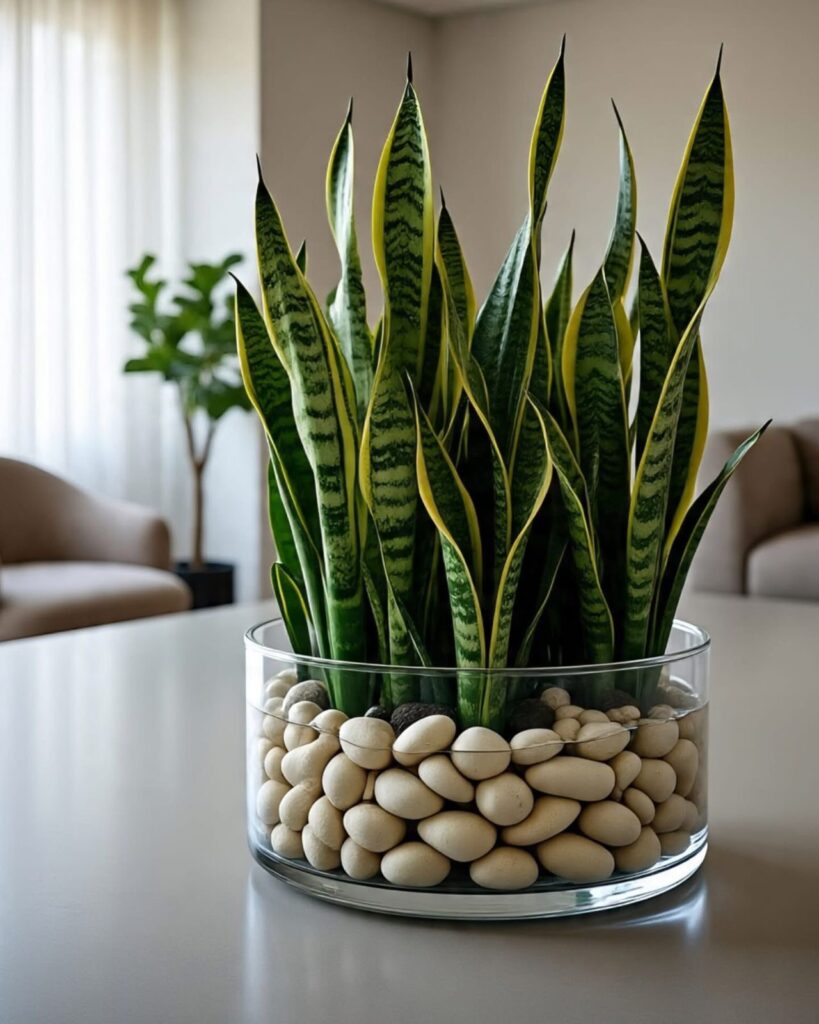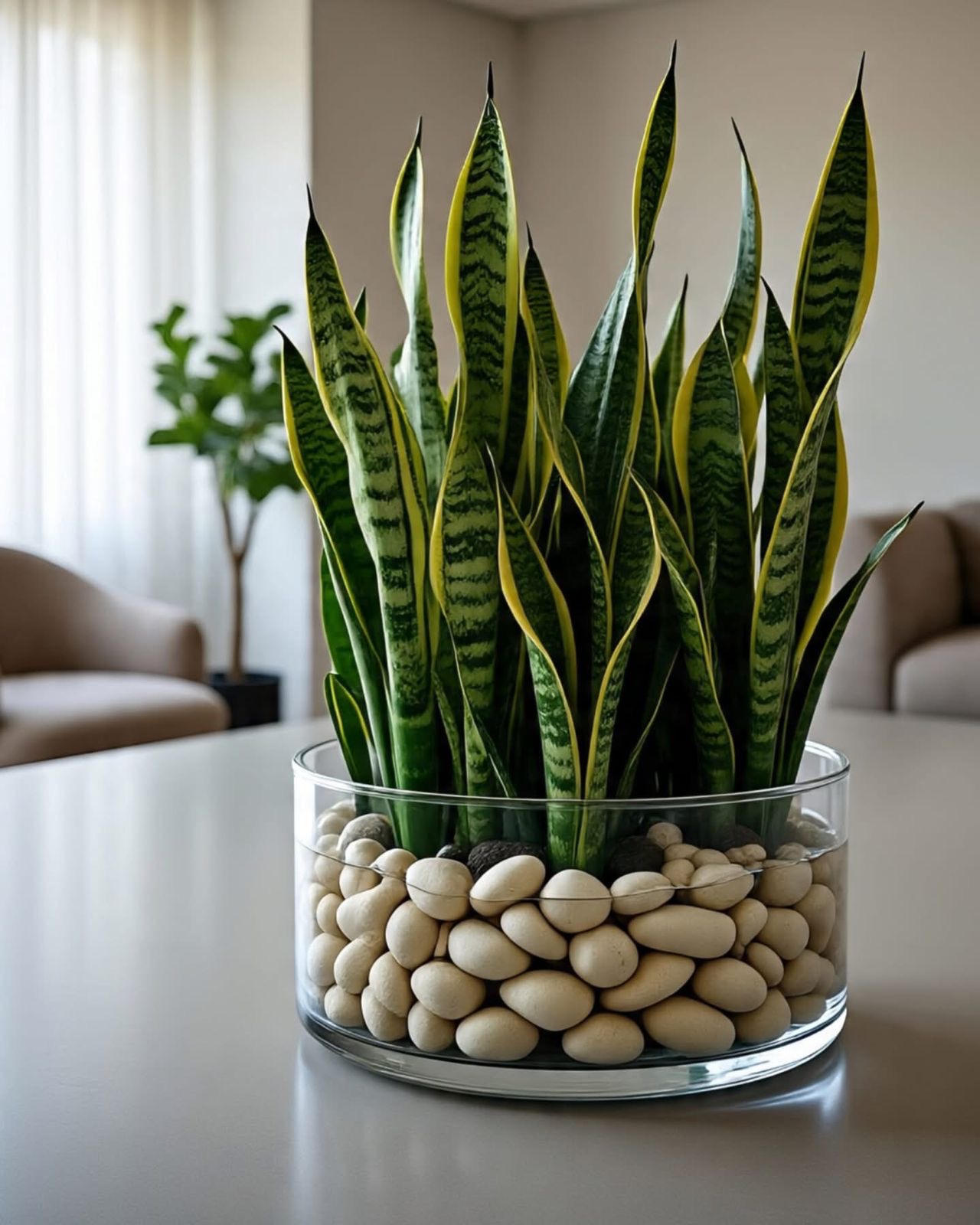
The snake plant, scientifically known as Sansevieria trifasciata and often referred to as mother-in-law’s tongue, is one of the most popular and resilient houseplants in the world. With its tall, upright, sword-shaped leaves striped in green and edged in yellow, it makes a bold architectural statement in any indoor setting. Its beauty is matched only by its toughness, making it a favorite for both beginners and seasoned plant lovers.
A Brief History and Background
Snake plants belong to the Asparagaceae family and are native to tropical regions of West Africa, particularly Nigeria and the Congo. In their native environment, they thrive in dry, rocky soils and withstand long periods of drought. This natural hardiness has made them one of the easiest plants to grow indoors across the globe.
They were traditionally valued not only for their aesthetic appeal but also for their practical uses. In some cultures, fibers from the leaves were used for making ropes and mats. Over time, their reputation spread as air-purifying plants, and they became a household staple.
Why Snake Plants Are So Popular
- Low Maintenance – Snake plants require minimal care, thriving even when neglected.
- Air-Purifying Qualities – NASA’s Clean Air Study famously highlighted snake plants as one of the best houseplants for improving indoor air quality by removing toxins like formaldehyde, benzene, and xylene.
- Adaptability – They can tolerate a wide range of lighting conditions, from bright indirect light to low light corners.
- Decorative Appeal – Their striking upright leaves add a modern, sculptural look to homes, offices, and minimalist interiors.
- Longevity – With proper care, they can live for decades, making them a long-term companion.
Light Requirements
Snake plants are remarkably adaptable:
- Bright indirect light is ideal, as it encourages faster growth and more vibrant leaf color.
- Low light conditions are tolerated, making them suitable for dim hallways and bedrooms.
- Direct sunlight should be avoided for long periods, as it can scorch the leaves.
Watering Needs
One of the biggest mistakes with snake plants is overwatering. Their roots are prone to rot if kept too wet.
- Watering rule: Let the soil dry completely between waterings.
- In spring and summer, water every 2–3 weeks, depending on your environment.
- In fall and winter, reduce watering to once a month or less.
- Always ensure pots have drainage holes, and avoid letting the plant sit in standing water.
Temperature and Humidity
Snake plants thrive in typical indoor temperatures between 18–27°C (65–80°F). They can tolerate temperatures as low as 10°C (50°F) but should be kept away from drafts, heaters, and air conditioners.
- Humidity: They prefer dry to average humidity, making them perfect for most homes.
Soil and Potting
Snake plants prefer well-draining soil, similar to cactus or succulent mixes. A blend of standard potting soil with added sand or perlite works well.
- Container: A pot with drainage holes is essential. The shallow roots don’t require deep pots, but a sturdy one helps support the tall leaves.
- Repotting: They grow slowly and usually need repotting only every 2–3 years, or when the roots crack the pot.
Propagation
Snake plants are easy to propagate, giving you more plants to decorate your home or share with friends.
- Leaf cuttings: Cut a healthy leaf into 2–3 inch sections and let them callus over for a day before planting in soil.
- Division: Separate the root clumps (rhizomes) when repotting and place them in new pots.
Styling Snake Plants Indoors
Snake plants look elegant in modern, minimalist, and Scandinavian interiors. Their upright form fits beautifully in corners, along hallways, or as a centerpiece on tables. In the image you provided, the plant is placed in a clear glass pot filled with decorative white stones — a chic, contemporary way to display them. While decorative stones look stylish, make sure there’s good drainage at the bottom to prevent root rot.
Health Benefits
Beyond aesthetics, snake plants contribute to wellness:
- Air purification: They absorb toxins and release oxygen, even at night — unlike most plants, which release carbon dioxide in the dark. This makes them ideal bedroom companions.
- Stress reduction: Studies suggest that having greenery indoors improves mood, focus, and productivity.
- Humidity balance: Though minor, they can slightly increase room humidity.
Toxicity
While snake plants are safe to touch, they are toxic to pets (cats and dogs) if ingested, causing nausea, vomiting, and diarrhea. It’s best to keep them out of reach of curious animals and children.
Common Problems and Solutions
- Yellowing leaves – Often caused by overwatering; let soil dry out.
- Soft, mushy leaves – Root rot from waterlogged soil. Repot into dry soil and trim damaged roots.
- Wrinkled leaves – Indicates underwatering; give a deep drink and adjust your watering schedule.
- Brown tips – Caused by low humidity, drafts, or inconsistent watering.
Feng Shui and Symbolism
In Feng Shui, the snake plant is considered a protector plant. Its tall, blade-like leaves symbolize strength, resilience, and upward growth. Placing it near entrances is believed to ward off negative energy and bring prosperity.
Final Thoughts
The snake plant (Sansevieria) is the perfect blend of style, resilience, and function. Whether you’re a busy professional, a beginner gardener, or a plant enthusiast looking for an easy yet elegant addition to your collection, the snake plant is a top choice. Its air-purifying qualities, minimal care requirements, and striking appearance ensure it remains one of the most beloved houseplants worldwide.
With just a little attention to watering and light, your snake plant will thrive for years — bringing beauty, health benefits, and a touch of natural elegance to your space.
